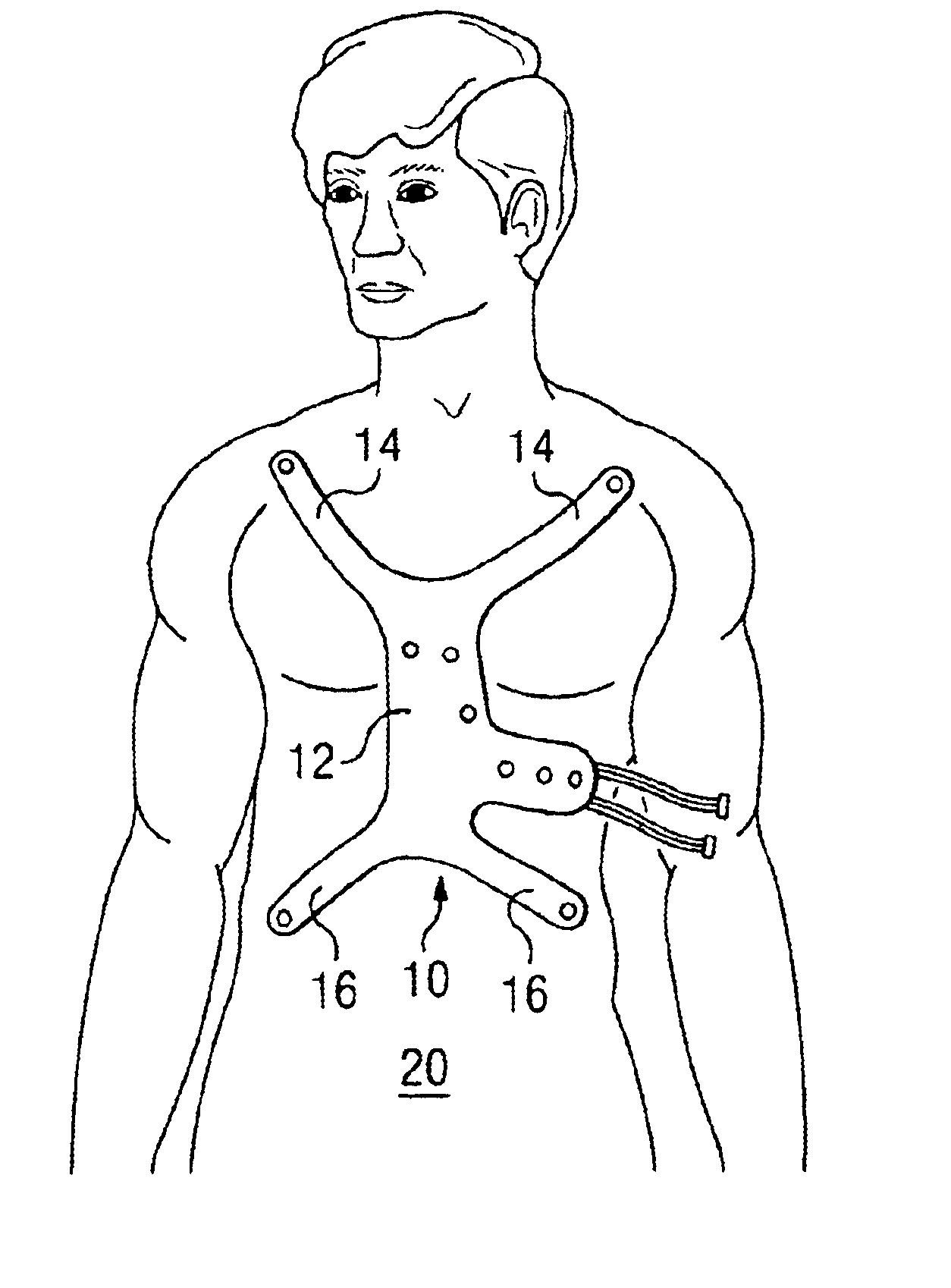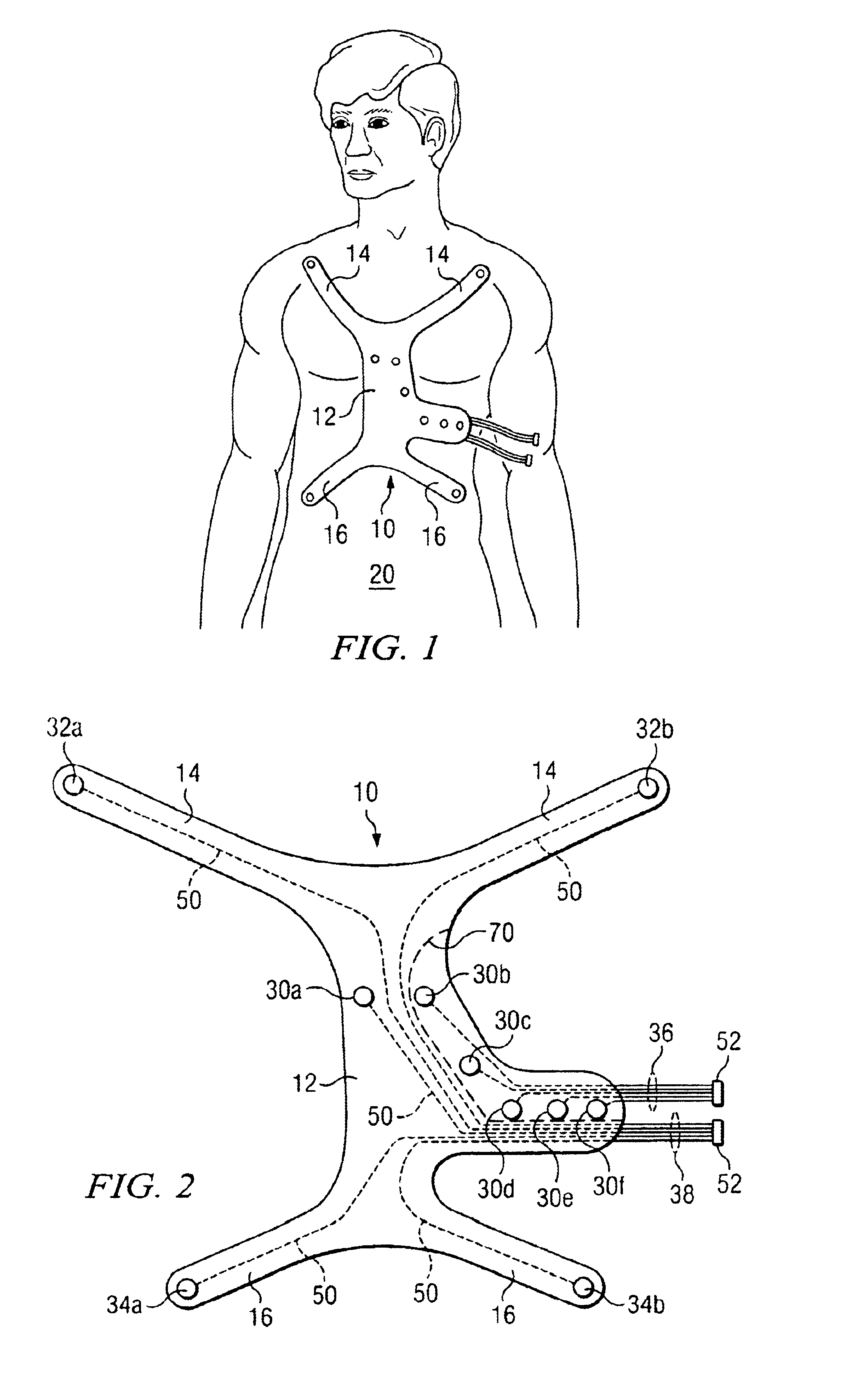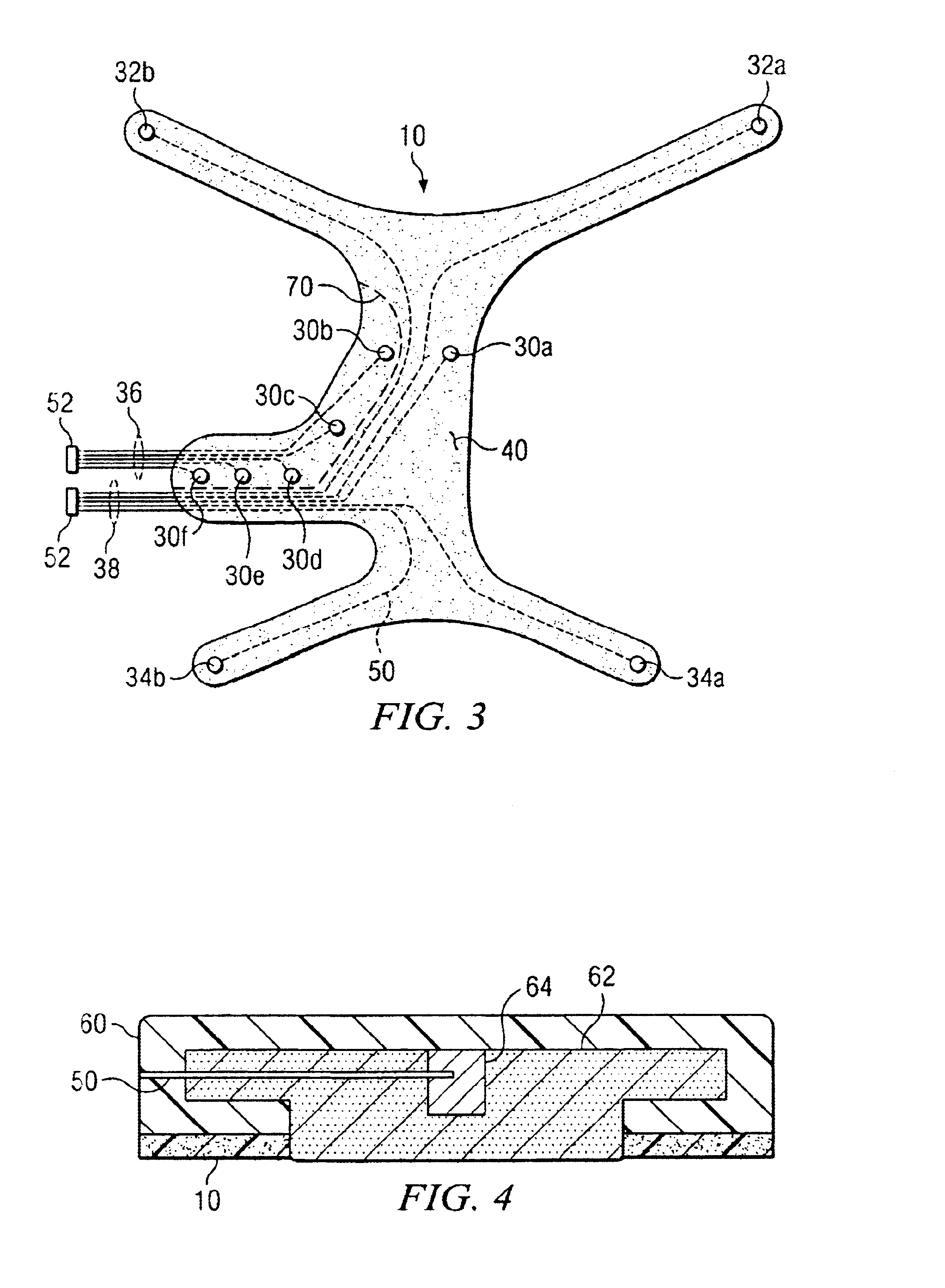Emergency ECG electrode chest pad
a chest pad and electrode technology, applied in the field of electrocardiogram (ecg) diagnostic devices, can solve the problems of increasing the time required for attaching the ten or twelve electrodes and the corresponding leads, increasing the difficulty of additional emergency medical procedures, and increasing the time required for attaching, so as to eliminate clutter and time the effect of attaching
- Summary
- Abstract
- Description
- Claims
- Application Information
AI Technical Summary
Benefits of technology
Problems solved by technology
Method used
Image
Examples
second embodiment
FIGS. 5 and 6 illustrate the subject invention. In addition to the structures and features detailed in the preferred embodiment, it is contemplated that external pacer pads 100a and 100b can be added to the device. The external pacer pad 100a is located just below the right upper fit portion 14 of the pad 10 and external pacer pad 100b is located just below the horizontal central fit portion 12, which are the proper positions for the prescribed anatomical locations. Like an implanted pacemaker, pacer pads 100 and 100 serve to provide an electrical pulse to the heart to correct an irregular heartbeat. Pacer pads 100a and 100b are electrically connected to pacer control instrument 110 by way of wires 102a and 102b that form a pacer plug bundle 104. Although wires 102a and 102b can be embedded in the fabric of pad 10, the are preferably left free or retained to the exterior of the pad 10 by the minimal use of an adhesive such that the wires 102a-b can easily be moved or removed with th...
third embodiment
the invention is illustrated with reference to FIGS. 7 and 8. In addition to the structures and features detailed in the preferred embodiment, it is contemplated that defibrillator pads 200a and 200b properly positioned for the prescribed anatomical locations can be added to the ECG electrode pad 10. The defibrillator pad 200a is located just below the right upper fit portion 14 of the pad 10 and defibrillator pad 200b is located just below the horizontal central fit 12 portion of the pad 10. The defibrillator pads 200a and 200b are made of a flexible solid conductor gel to ensure contact with the patent and can be adhered to the patient as know in the art, consistent with the techniques used for the main ECG pad 10. If defibrillation of the patient is required, the physician can applied the defibrillation paddles of the defibrillator directly to pads 200a and 200b without use of separate conductor gel. As previously described in the primary embodiment of the inventive ECG pad, a pe...
PUM
 Login to View More
Login to View More Abstract
Description
Claims
Application Information
 Login to View More
Login to View More - R&D
- Intellectual Property
- Life Sciences
- Materials
- Tech Scout
- Unparalleled Data Quality
- Higher Quality Content
- 60% Fewer Hallucinations
Browse by: Latest US Patents, China's latest patents, Technical Efficacy Thesaurus, Application Domain, Technology Topic, Popular Technical Reports.
© 2025 PatSnap. All rights reserved.Legal|Privacy policy|Modern Slavery Act Transparency Statement|Sitemap|About US| Contact US: help@patsnap.com



